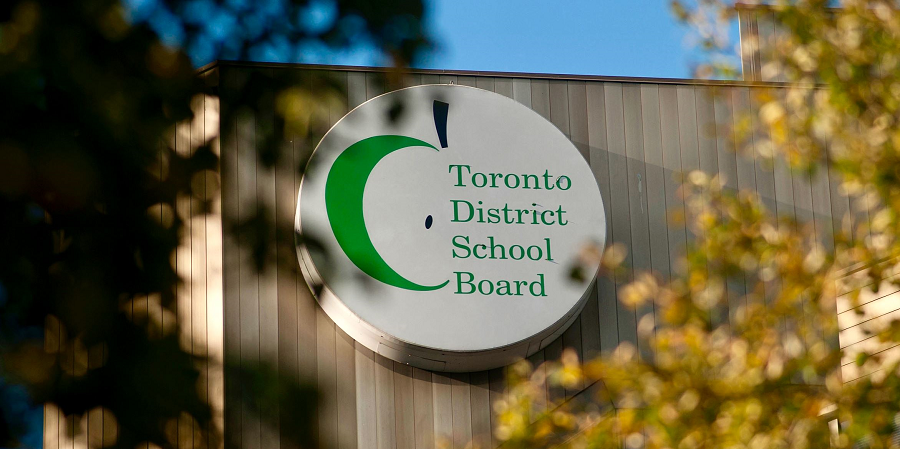Note: You can start school this September.
Requirements to Start a Private Elementary School in Ontario
- Register with the Ministry of Education:
- Submit a Notice of Intention to Operate a Private School (NOI) to the Ontario Ministry of Education by September 1 each year.
- Pay a non-refundable $300 fee (first year only) via cheque or money order payable to the Minister of Finance.
- Provide details about the school’s name, principal, address, hours of operation, and projected enrollment.
- Meet the Education Act Standards:
- The school must provide instruction between 9 a.m. and 4 p.m. on school days for five or more students of compulsory school age (6–16 years).
- Offer instruction in at least some subjects from the Ontario elementary curriculum (e.g., math, language, science, or social studies).
- Have a central office for maintaining student records, including attendance, Ontario Student Information System (ONSIS), and Ontario Student Records (OSR).
- Comply with Local Regulations (City Requirement):
- Ensure the school facility meets municipal zoning, fire, health, and building code requirements.
- Obtain necessary permits and pass inspections (e.g., fire and health inspections).
- Appoint a Principal and Establish Policies:
- Designate a principal to oversee operations (no specific qualifications required for private elementary schools).
- Create policies for attendance, staff evaluation, and communication of student achievement to parents.
- Develop a Curriculum:
- Design a curriculum that meets provincial educational standards, though private elementary schools have flexibility and are not required to follow the full Ontario curriculum unless offering Ontario Secondary School Diploma (OSSD) credits (not applicable for elementary schools).
- Secure Funding and Create a Business Plan:
- Develop a detailed business plan outlining costs (e.g., facilities, staff salaries, materials) and revenue sources (e.g., tuition, donations, or loan).
- Incorporate the school as a for-profit corporation or non-profit organization to establish its legal structure.
- Ensure Facility Compliance:
- Secure a location that meets safety and accessibility standards (e.g., Accessibility for Ontarians with Disabilities Act requirements).
- Equip the facility with necessary features like classrooms, fire safety systems, and emergency exits.
- Submit Statistical Reports:
- Provide enrollment and staff data to the Ministry of Education three times per year as required.
- Optional Accreditation:
- Consider joining associations like the Ontario Federation of Independent Schools (OFIS) for additional resources and support, though membership is not mandatory.
- Market the School:
- Develop a marketing strategy to attract students, ensuring compliance with Ontario’s advertising laws for educational institutions.
-------------------------------------------------------------------------------------------------------
Step-by-Step Guide to Starting a Private Elementary School in Ontario
Starting a private elementary school in Ontario is like building a small business with a focus on education. Plan your school’s vision, and make sure you have resources to make it work. Below, we break it down into simple steps to help you understand the process.
Step 1: Create a Clear Vision
Before you start, think about what makes your school special. Will it focus on a specific teaching style, like Montessori or arts-based learning? Will it be faith-based or have a unique approach to subjects? Write down your goals and how your school will be different from others. This vision will guide everything you do, from hiring teachers to attracting students. Check Jawed Anwar’s articles on Education at www.as-seerah.com
Step 2: Understand the Legal Rules
In Ontario, private schools are governed by the Education Act, but elementary schools have fewer rules than secondary schools. The main things you need to do are:
- Register your school: You must tell the Ontario Ministry of Education that you plan to open a school by filling out a form called the Notice of Intention (NOI). This form asks for basic details like the school’s name, address, principal, and how many students you expect. You need to submit this by September 1 every year, and in your first year, you’ll also pay a $300 fee.
- Meet basic requirements: Your school must teach kids aged 6–16 (compulsory school age) for at least five students. You need to offer classes between 9 a.m. and 4 p.m. on school days and teach some subjects like math, reading, or science. You don’t have to follow the exact Ontario curriculum, but you need to provide a good education.
- Keep records: You need a central office to store student records, like attendance and report cards, and share some of this information with the Ministry.
The Ministry will visit your school within the first month of opening (most probably in the first week of October) to check that you’re meeting these basic rules. If everything looks good, they’ll give you a Business School Identification (BSID) number, and your school will be listed as a registered private school.
Following are your Plan (Nothing to do with the Ministry of Education)
Step 3: Plan Your Finances
Running a school costs money. You’ll need to pay for things like renting or buying a building, hiring teachers, buying books and supplies, and marketing your school. Since private schools don’t get government funding, you’ll rely on tuition fees, donations, or loans. Here’s how to get started:
- Make a business plan: Write a plan that shows how much money you need, how you’ll spend it, and how you’ll earn money (like through student fees, donations, fundraising events, etc).
- Choose a legal structure: Decide if your school will be a for-profit business (where you can make a profit) or a non-profit organization (where money goes back into the school). A lawyer can help you set this up to protect your personal money and follow the law.
- Find funding: You can ask the community members to donate in this project or you can develop any innovative economic plan.
Step 4: Find a Location
You need a building that’s safe and suitable for a school. This could be a rented space, a purchased building, or even a renovated community center or place of worship. The building must:
- Meet zoning laws (check with your city to make sure the location is allowed to be a school).
- Pass fire and health inspections to ensure it’s safe for kids.
- Have features like classrooms, bathrooms, and emergency exits.
- Follow accessibility rules (e.g., ramps for wheelchairs) under the Accessibility for Ontarians with Disabilities Act.
A lawyer or real estate agent can help you review lease or purchase agreements to make sure the building meets all requirements.
Step 5: Design Your Curriculum
One of the best parts about running a private elementary school is that you can create your own curriculum. You don’t have to follow the Ontario curriculum exactly, but you should teach subjects like math, language, science, or social studies to provide a good education. For example, if your school focuses on environmental education, you might include extra lessons about nature or sustainability. Make sure your curriculum is clear and well-organized so parents know what their kids will learn.
Step 6: Hire Staff and Set Policies
You’ll need a principal to manage the school and teachers to teach the students. Unlike public schools, private elementary school teachers and principals don’t need to be certified by the Ontario College of Teachers, but hiring qualified staff will make your school more appealing to parents. You’ll also need:
- Policies: Create rules for things like how you track student attendance, how you evaluate teachers, and how you share student progress with parents (e.g., report cards or meetings). A School/Parent Council is a great way to better engage with parents.
- Contracts: Parents will sign a contract with your school, which should outline things like tuition fees, discipline policies, and what subjects you teach. Make sure this contract is clear, as it’s the main way parents know what to expect.
Step 7: Pass Inspections and Get Registered (Ministry of Education)
After you submit your NOI, the Ministry of Education will visit your school to check that it meets the basic requirements. They’ll look at things like:
- Your student records system.
- Whether you’re teaching during the required hours.
It is better (not necessary) to have at least one an Ontario Certified teacher to respond the questions.
If you pass, you’ll get your BSID number, and your school will be officially recognized. You’ll also need to send the Ministry data about your students and staff three times a year.
Step 8: Market Your School
To attract students, you’ll need to let parents know about your school. Create a website, use social media, and advertise in your community (e.g., through flyers or local events). Make sure your marketing is honest and follows Ontario’s advertising rules for schools. For example, don’t promise things your school can’t deliver, like guaranteed university admissions. You can also join groups like the Ontario Federation of Independent Schools (OFIS) for extra support and to connect with other private schools.
Step 9: Keep Up with Ongoing Requirements
Once your school is running, you’ll need to:
- Submit the NOI form every year by September 1.
- Provide student and staff data to the Ministry three times a year.
- Keep your building safe and up to code.
- Update your curriculum and policies as needed to meet parent expectations.
For Islamic Community:
Please check Jawed Anwar’s article: Masjid Alternate of Public Education
To open an affordable School in the Masjid/Islamic Center Contact:
Maulana Maulana Noor-ud-Din Ghauri
Phone: (905) 983-9116
https://www.youtube.com/watch?v=wD7xj7HnvTg&ab_channel=AsSeerah
JOIN
AsSeerah What's App Channel Follow: AsSeerah Facebook Page AsSeerah X Be the Writer’s Friend https://www.facebook.com/JawedAnwarPage/







